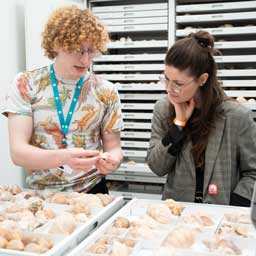This past summer, I conducted fieldwork in Costa Rica where we collected data on the diverse community of rodents in Tapanti-Macizo de la Muerte National Park. We are trying to understand the anatomical and behavioral characteristics that allow rodent species to utilize different resources, co-exist in their environment, and diversify from common ancestors.
Working in the rain forest of Central America is not easy. It involves carrying and setting hundreds of heavy traps on very steep hills, often in the rain with annoying insects buzzing around your head and deadly creatures such as venomous snakes. Despite these challenges, we were able to capture hundreds of rodents from several species, some of which are endemic to the Costa Rica-Panama mountain range, meaning they are found nowhere else. We measured physical characteristics like body size and bite force as a proxy for feeding performance, collected fecal samples for diet analysis, and conducted behavioral observations.
These data will help fill in the gaps for a better understanding of how Neotropical rodent communities are structured and which adaptations allow species to thrive in their ecosystem. This ongoing research will also be highly valuable to inform conservation decisions that affect these small yet highly diverse and ecologically important mammals.
David Villalobos Chaves is a University of Washington Ph. D. student in the Lab of Curator of Mammals Sharlene Santana and a mammalogy volunteer at the Burke Museum of Natural History and Culture. He is a Costa Rican biologist interested in the natural history, ecology and evolution of mammals, with a special focus on highly diverse groups such as rodents and bats.
Read more Mammalogy research stories.




